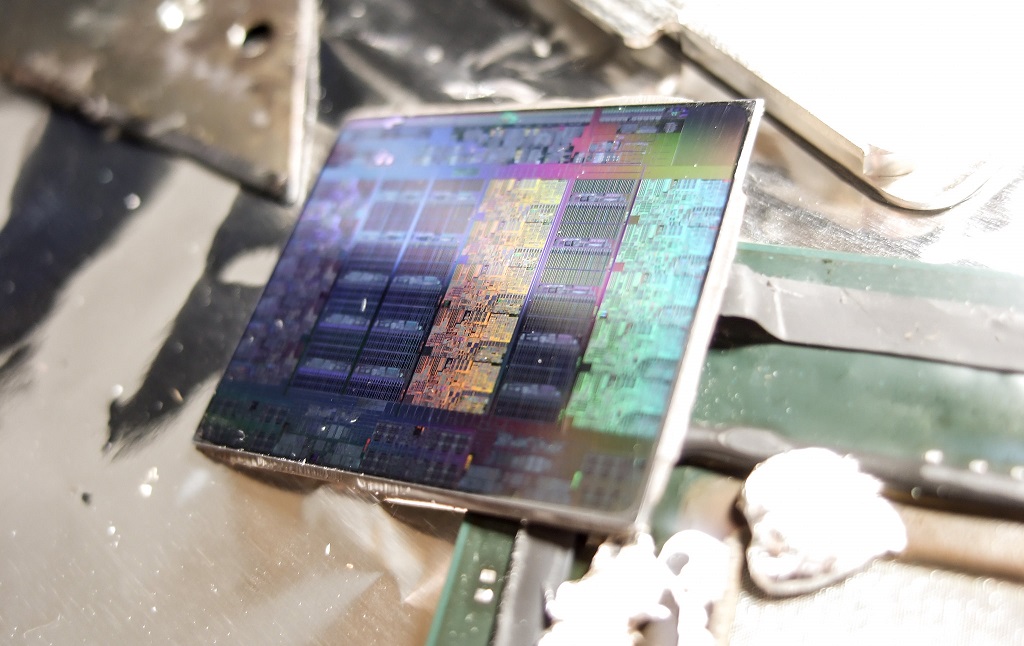"Overcoming" Moore's Law: Transistor Technologies of the Future
We are talking about alternatives for silicon.

/ photo Laura Ockel Unsplash
Moore's Law, Dennard's Law and the Kumi Rule are no longer relevant. One of the reasons is that silicon transistors are approaching their technological limit. This topic we discussed in detail in the previous post . Today we are talking about materials that in the future can replace silicon and extend the effect of the three laws, which means increase the efficiency of processors and their computing systems (including servers in data centers).
Carbon nanotubes
Carbon nanotubes are cylinders whose walls consist of a monatomic carbon layer. The radius of carbon atoms is less than that of silicon; therefore, nanotube-based transistors have a high electron mobility and current density. As a result, the speed of the transistor increases and its power consumption decreases. According to engineers at the University of Wisconsin-Madison, productivity increases fivefold.
The fact that carbon nanotubes have better characteristics than silicon has been known for a long time - the first such transistors appeared more than 20 years ago . But only recently, scientists have managed to circumvent a number of technological limitations in order to create a sufficiently effective device. Three years ago, physicists from the already mentioned University in Wisconsin presented a prototype of a nanotube-based transistor, which went around the characteristics of modern silicon devices.
')
One of the applications of devices based on carbon nanotubes is called flexible electronics. But so far the technology has not gone beyond the laboratory and there is no talk about its mass implementation.
Graphene nanoribbling
They are narrow strips of graphene with a width of several tens of nanometers and are considered to be one of the main materials for creating transistors of the future. The main property of a graphene ribbon is the ability to accelerate the current flowing through it using a magnetic field. At the same time, graphene has 250 times more electrical conductivity than silicon.
According to some data , processors based on graphene transistors will be able to operate at frequencies close to terahertz. At the same time, the frequency of operation of modern chips is within 4–5 gigahertz.
The first prototypes of graphene transistors appeared ten years ago . Since then, engineers have been trying to optimize the processes of "assembling" devices based on them. Most recently, the first results were obtained - a team of developers from the University of Cambridge in March announced the launch of the first graphene chips . Engineers say that the new device can speed up the work of electronic devices tenfold.
Hafnium dioxide and selenide
Hafnium dioxide has been used in the manufacture of microchips since 2007 . From it make an insulating layer on the transistor gate. But today, engineers are proposing to optimize the operation of silicon transistors with its help.

/ photo Fritzchens Fritz PD
Early last year, scientists from Stanford discovered that if the crystal structure of hafnium dioxide is reorganized in a special way, its electrical constant (responsible for the ability of the medium to transmit an electric field) will increase more than four times. If you use this material to create transistor gates, you can significantly reduce the effect of the tunnel effect .
Also, American scientists have found a way to reduce the size of modern transistors using hafnium and zirconium selenides. They can be used as an effective insulator for transistors instead of silicon oxide. Selenides have a much smaller thickness (in three atoms), while maintaining a good width of the forbidden zone. This is an indicator that determines the power consumption of a transistor. Engineers have already managed to create several working prototype devices based on hafnium and zirconium selenides.
Now the engineers need to solve the problem with the connection of such transistors - to develop for them the appropriate contacts of small size. Only then can we talk about mass production.
Molybdenum disulfide
By itself, molybdenum sulfide is a rather poor semiconductor, which is inferior in properties to silicon. But a group of physicists from the University of Notre Dame discovered that thin molybdenum films (one atom thick) have unique qualities - transistors based on them do not pass current in the off state and require little switching energy. This allows them to operate at low voltages.
A prototype of the molybdenum transistor developed in the laboratory to them. Lawrence at Berkeley in 2016. The width of the device is only one nanometer. Engineers say such transistors will help extend Moore's law.
Also, a transistor based on molybdenum disulfide last year was presented by engineers from the South Korean University. It is expected that the technology will find application in the control circuits of OLED-displays. However, the mass production of such transistors is not yet talkable.
Despite this, researchers from Stanford argue that the modern infrastructure for the production of transistors can be rebuilt with minimal costs to work with "molybdenum" devices. Whether it will be possible to implement such projects will be seen in the future.
What we write about in our Telegram channel:
- How IaaS-provider protects personal data of client companies
- In the wake of the event VMware EMPOWER 2019: learn the basics of Workspace ONE
- A year later - who got the GDPR penalties
- How are data centers - new processors
- How are the data centers: technological trends in recent years
- How to protect IoT-network: help open source
Source: https://habr.com/ru/post/455868/
All Articles